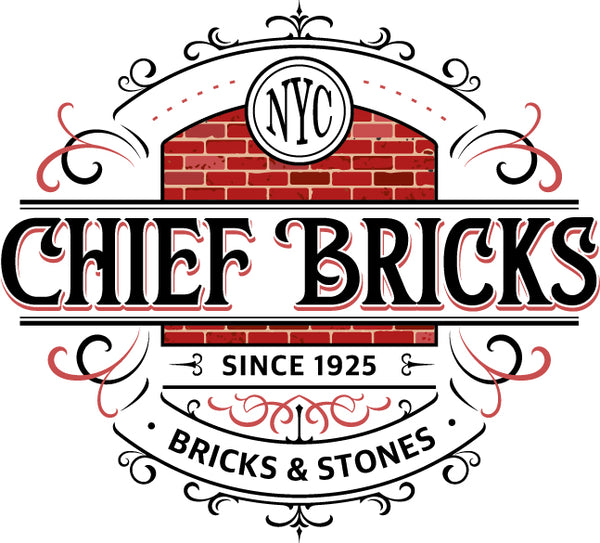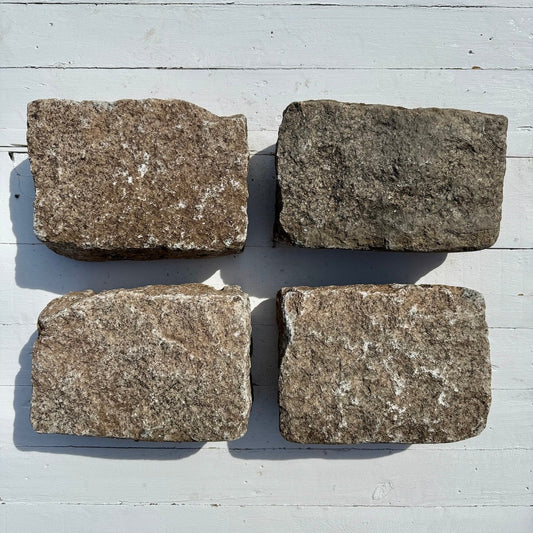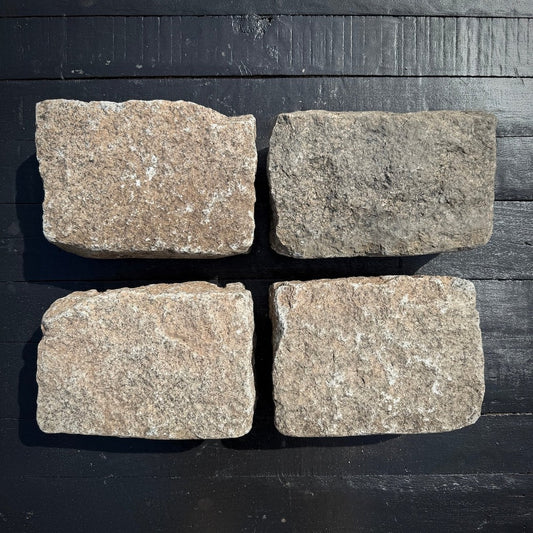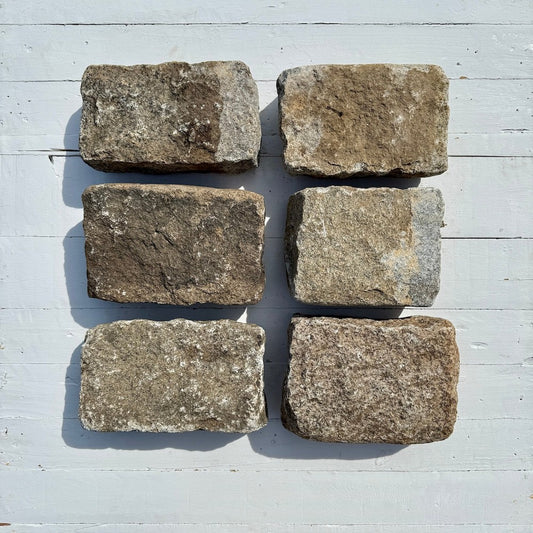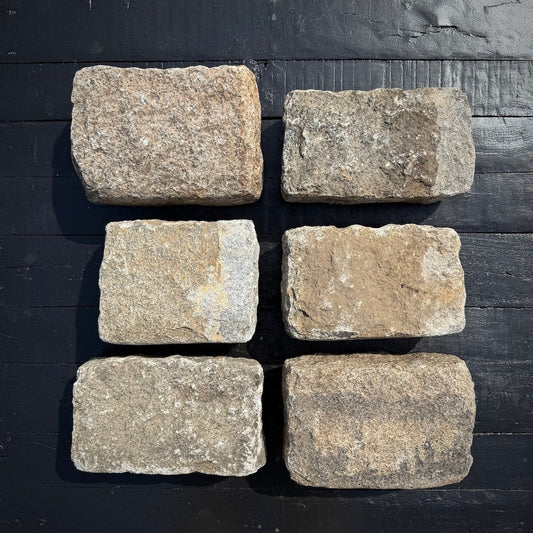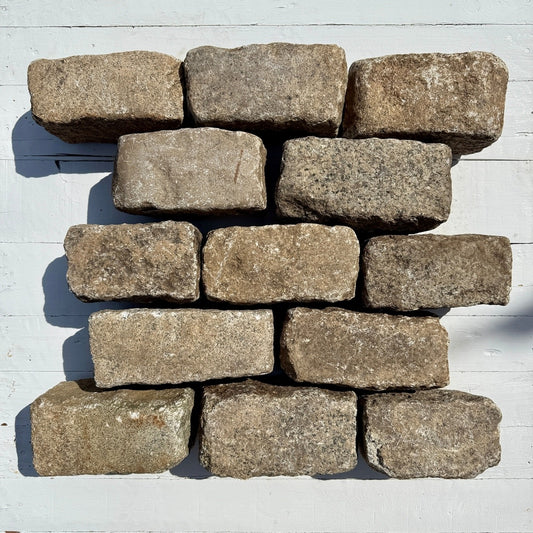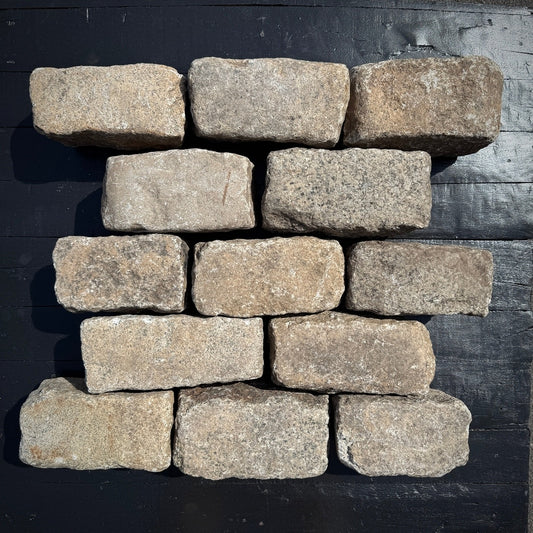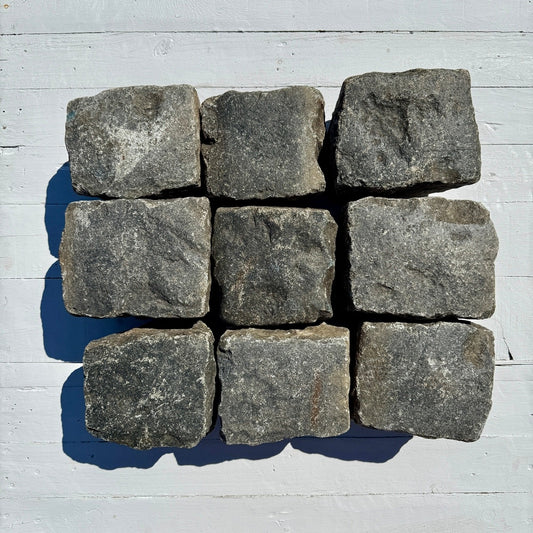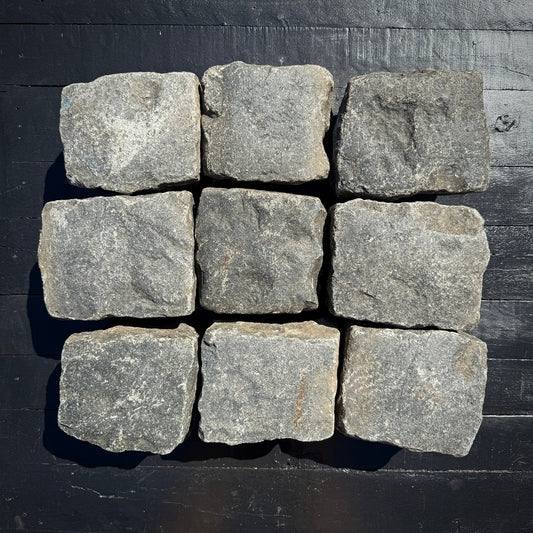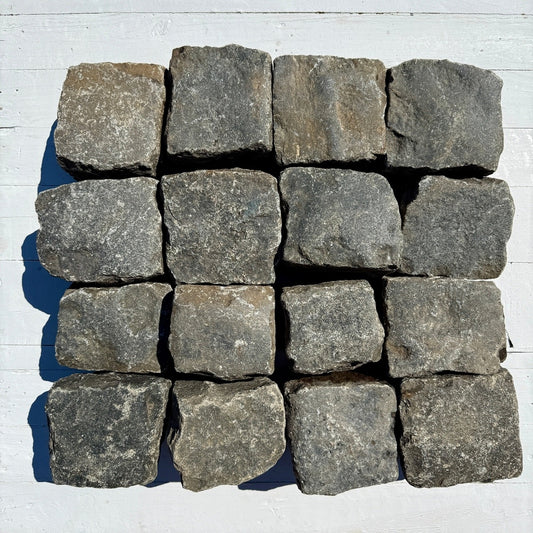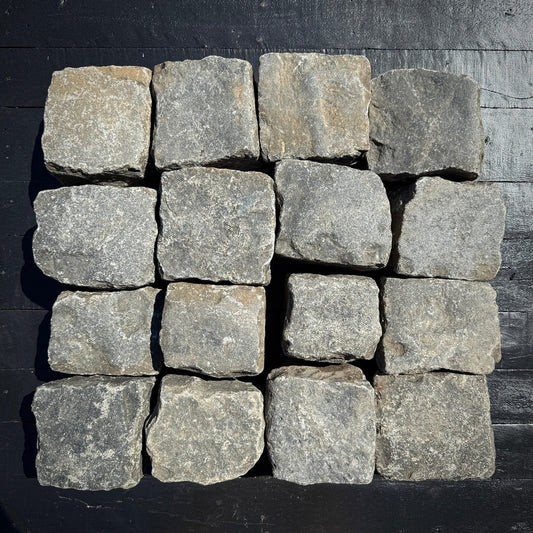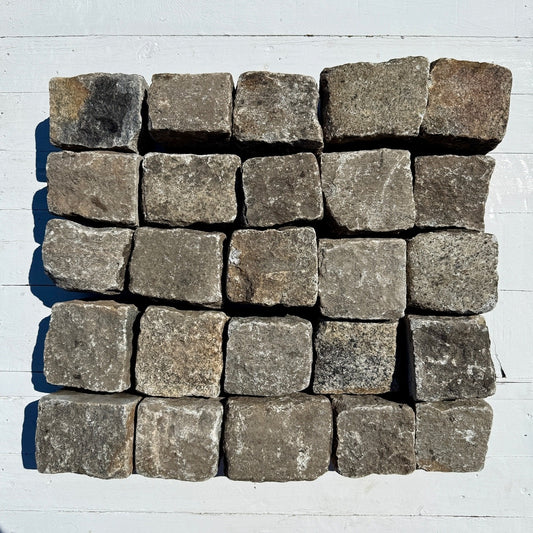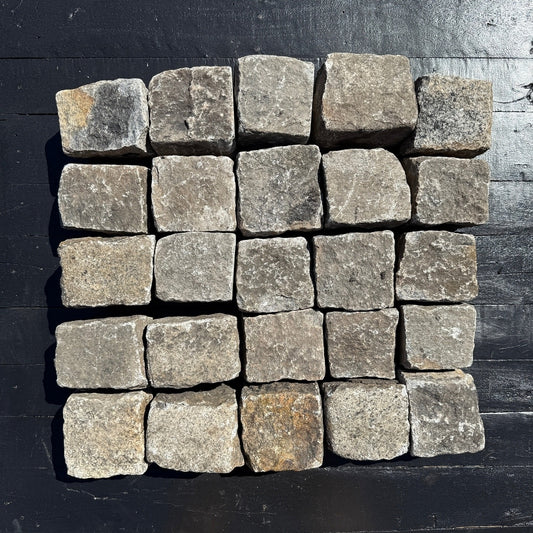There's something magical about a cobblestone driveway. It brings to mind old European streets and a sense of history that other driveway materials just can't match. If you're interested in that classic curb appeal, you probably have a lot of questions about making a stone driveway a reality.
You're in the right place. We're going to walk through everything you need to know about this beautiful and durable option for your home. You'll learn the benefits, the challenges, and what it really takes to get one.
Table of Contents:
- What Exactly Is a Cobblestone Driveway?
- The Unmistakable Charm: Why Choose Cobblestone?
- The Reality Check: What are the Downsides?
- Let's Talk Numbers: A Cobblestone Driveway Cost
- Finding the Right Stone for Your Home
- The Installation Process: Getting it Right
- Caring for Your Cobblestone Driveway
- Frequently Asked Questions
- Conclusion
What Exactly Is a Cobblestone Driveway?
The term cobblestone gets used a lot in landscaping, but its meaning has evolved. Historically, cobblestones were naturally rounded stones gathered from riverbeds. These stones, worn smooth by water, were used to pave streets for centuries.
Today, what we call cobblestone paving is usually done with granite that has been cut into a rectangular block shape. These are technically called setts, but most people, including suppliers, just call them cobblestones. These modern cobblestones are often called Belgian Blocks.
They give you the same historic feel but are more uniform and easier to install than true, rounded river cobbles. This uniformity makes for a strong, stable surface that's perfect for driving on. This type of block paving creates an incredibly durable and appealing driveway cobblestone surface.
The Unmistakable Charm: Why Choose Cobblestone?
There are many reasons people choose cobblestone for their driveway paving project. They want to make a statement about quality and permanence. It's an investment in beauty that pays off in many ways.
Timeless Aesthetic and Curb Appeal
You just can't beat the look of natural stone. A cobbled driveway instantly elevates the look of your home, especially a stone house. It suggests quality and adds a touch of old-world charm that is hard to replicate.
This kind of upgrade can dramatically increase your home's curb appeal and even its resale value. According to a study on curb appeal, exterior improvements have a significant impact on how quickly a home sells. A cobblestone driveway is the kind of feature that makes a property memorable.
Built to Last Generations
Think about the ancient Roman roads; many are still around today using similar paving stone techniques. Cobblestone pavers, especially those made from granite cobblestone or basalt cobblestones, are incredibly tough. They can handle heavy vehicles without cracking like a concrete driveway or warping like asphalt.
These natural stones stand up to harsh weather, from freezing winters to scorching summers. They also resist damage from oil and other chemicals. A properly installed driveway with these stone pavers can easily last over 100 years.
Surprisingly Low Maintenance
It might look complicated, but maintaining a cobblestone surface is fairly simple. The main task is keeping the joints between the paving stones clean and free of weeds. An occasional pressure wash is usually all it takes to keep your beautiful driveway looking great.
What if a paving stone gets damaged or stained? Unlike a giant slab of concrete paving, you can just replace the single damaged stone. This makes spot repairs for your pavers driveway easy and affordable over the long haul.
The Reality Check: What are the Downsides?
As much as we love cobblestone, it's not the right choice for every person or every budget. It's important to be realistic about the challenges before you commit. Here are a few things to consider.
The Initial Investment
There's no sugarcoating it: the cobblestone driveway cost is high compared to other options. The stones themselves are costly, and the skilled labor needed for proper cobblestone installations adds to the price. This makes it one of the more expensive driveway materials available.
You can expect to pay several times more than you would for a basic asphalt or concrete driveway. You have to see it as a long-term investment in your home. Think of it less as an expense and more as an addition to your property's total value.
Installation Isn't a Weekend DIY Project
This is not a project for the average do-it-yourselfer. To install cobblestone that lasts requires deep excavation and careful preparation of the base layers. This is critical for proper drainage and to prevent the paving blocks from shifting or sinking.
Setting each stone by hand is an art form that takes experience. It needs a professional to get the lines right and make sure the surface is even and secure. Cutting corners on installation will lead to big problems down the road.
A Bumpy Ride?
The surface of a cobblestone driveway is naturally uneven, which is part of its character. While this contributes to its charm, it can be a practical issue. Shoveling snow can be more difficult than on a smooth surface.
The texture can also be challenging for things like bicycles, skateboards, or wheelchairs. If you or your family members use these often, this is something to think about. A well-installed driveway with a flatter top stone profile can help minimize this, however.
Let's Talk Numbers: A Cobblestone Driveway Cost
So, what is the real driveway cost for this premium material? Prices for a cobblestone pavement can vary a lot based on your location, the specific stone type you choose, and the complexity of the job. But we can give you a general idea.
You should expect the cost to range from $40 to $75 per square foot, fully installed. For an average two-car driveway, this can add up quickly. A good portion of this cobblestone cost is labor, which reflects the skill required for this work.
Here's how it compares to some other popular driveway pavers.
| Driveway Material | Average Cost Per Square Foot (Installed) | Lifespan |
|---|---|---|
| Asphalt | $7 - $15 | 20-30 years |
| Concrete | $8 - $18 | 30-40 years |
| Brick Pavers | $15 - $30 | 25+ years |
| Concrete Pavers | $15 - $35 | 50+ years |
| Cobblestone (Granite) | $40 - $75+ | 100+ years |
Several things can change this price. Reclaimed antique cobblestones will often cost more than newly quarried ones. More site preparation, like removing an existing driveway or dealing with poor soil, will also add to the final bill for your driveway stone.
Finding the Right Stone for Your Home
Not all cobblestones are the same, and your paver choice is important. You have options when it comes to the look, feel, and history of your stone. This is one of the most exciting parts of planning your driveway design.
Reclaimed Antique Cobblestone
This is the real deal, full of character. Reclaimed cobblestone driveway pavers were salvaged from old streets in America or Europe. Each stone carries a piece of history and has a unique patina from decades of wear.
The pros are obvious: you get unmatched character that simply cannot be faked. The downsides are the higher cobblestone cost and the fact that the size stone can be less consistent. This makes installation a bit more of a puzzle for the installer.
Newly Quarried Cobblestone
New Cobblestones are cut from granite stone at a quarry, offering a cleaner, more uniform look. They can be either machine cut for a consistent sizing or split face, cut by hand for a more natural look.
When selecting a New Quarried Cobblestone or Belgian Block "hand cut / split face", non-tumbled stones offer the following advantages:
- Uniformity: stones are uniform in size for a natural look and easy installation
- Color and Finish: high-quality stones display their true, rich color without surface-level damage
- Cut Quality: linear cut edges are crucial for creating tight joints and a clean pattern
A clean appearance is essential, and the color should come from the stone itself, not from scratching and excessive tumbling. The stones will develop their own beautiful patine over time.
The Installation Process: Getting it Right
We've stressed how important professional installation is, but what does that process actually look like? A successful project plan is about much more than just laying down paving stones. It's a multi-step process that builds a foundation for a lifetime of performance.

- Excavation and Site Prep: The process starts with excavating the driveway area to a depth of at least a foot. If there is an old concrete or asphalt surface, it must be completely removed. This step clears the way for a solid foundation.
- Building the Base Layer: A thick base layer of compacted gravel is laid down. This sub-base is crucial for stability and drainage, as outlined by paving experts at the Interlocking Concrete Pavement Institute. This foundation prevents the driveway cobblestone driveway from sinking or shifting over time.
- Setting Bed Installation: Over the gravel goes a layer of sand or stone dust, which is carefully leveled. This layer, about one to two inches thick, provides a bed for the cobblestone pavers to be set into. It allows for minor adjustments to get the height of each stone just right.
- Laying the Cobblestones: This is where the artistry happens, as the pavers laid one by one. The installer meticulously taps each cobblestone driveway cobblestone into place to create an even surface with tight joints. The pattern and precision here determine the final look and strength of the driveway.
- Jointing and Finishing: Finally, the joints between the stones are filled. This can be done with a polymeric sand that hardens or with a traditional mortar. The method used will depend on the desired look and the specific site conditions for the cobblestone driveway cobblestone driveway.
Following this process is a good idea to achieve a durable and beautiful result. Professional advice project management is recommended for such a significant undertaking.
Caring for Your Cobblestone Driveway
Once your beautiful new driveway is installed, you'll want to keep it looking its best. The good news is, these driveways require very little work. The durability of the stone natural stone does most of the job for you.
Regular sweeping will keep it clear of leaves and debris. To tackle dirt and grime, you can scrub it with a stiff brush and some soapy water. For deeper cleaning, a pressure washer on a low setting can work wonders on the stone surface.
You may see some weeds try to pop up in the joints, especially if they are sand-filled. You can pull these by hand or use a vinegar-based weed killer. For stubborn organic stains, there are special stone cleaners available that won't harm the material.
To Seal or Not to Seal?
What about sealing? Generally, granite cobblestones do not need to be sealed. Their low porosity makes them very resistant to staining.
In fact, some sealers can trap moisture and cause problems, so it's usually best to let the stone breathe. Some other stone types, like certain sandstone cobblestone varieties, might benefit from a sealer. Always consult with your installer for the best advice for your specific driveway stone.
Frequently Asked Questions
Here are answers to some frequently asked questions about cobblestone driveways.
Can I get a modern look with cobblestones?
Absolutely. While we often associate cobblestones with old-world charm, a modern cobblestone driveway is achievable. Using uniformly cut non-tumbled stones in a simple, linear pattern creates a sleek and contemporary look.
Are cobblestone driveways permeable?
They can be. If the joints are filled with gravel or specialized sand instead of mortar, water can seep through into the ground below. This makes them a more environmentally friendly option than solid surfaces, and some may even qualify as permeable pavers depending on local regulations.
How long does installation take?
The installation process for a cobblestone driveway is labor-intensive. For an average-sized driveway, expect the project to take anywhere from one to three weeks. The timeline depends on the size, complexity of the design, and weather conditions.
What is the difference between cobblestone and a brick driveway?
The main difference is the material. Cobblestones are natural stone, while brick pavers are made from fired clay. Both are installed as individual units, but cobblestones are generally much more durable, last longer, and have a higher initial cost than a typical red brick driveway.
Conclusion
A cobblestone driveway is much more than just a surface; it's a feature. It is a significant financial investment, there is no question about that. But it is an investment that offers a return in beauty, longevity, and pride of ownership that few other home improvements can match.
From choosing between historic reclaimed stones and crisp, new granite to planning the perfect driveway design, the process is an exciting one. By understanding the real cobblestone driveway cost, the proper installation methods, and the different types of stone available, you are better equipped to decide. A driveway of natural stone natural stone is a timeless addition to any home.
About the author
Alkis Valentin is the founder of Chief Bricks and a specialist in reclaimed brick, cobblestone, and natural stone for high-end residential and landscape projects nationwide.
